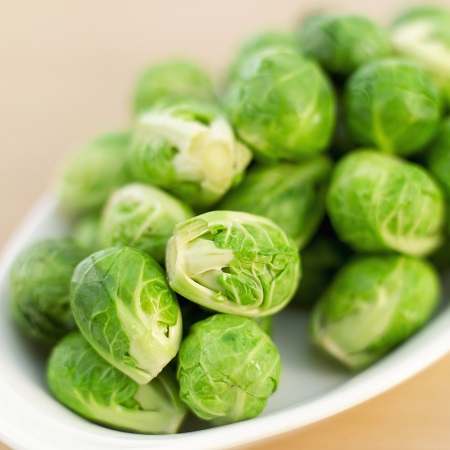
A fall harvest of greens can be the second big take of the year, when it comes to brassicas. Cabbage, Brussels sprouts, and broccoli all start to ramp up production as the weather starts to cool, providing vitamins that would seem to be in shorter supply once summer fruits and vegetables are no longer in harvest.
A fall crop of these vegetables takes advantage of their willingness to grow in the season’s typical weather. Several broccoli varieties, including Green Magic, can take cool weather as well as any lingering heat that persists into October. Calabrese is an heirloom variety that features smaller heads and a classic broccoli flavor. The variety Flash is as fast as its name sounds and will have a crop on the table in a hurry. Many broccoli types also feature side shoots, which are smaller heads that grow from the sides of stems after the big heads are produced. Commercial growers often ignore these, but the home gardener can frugally snap these as well. Despite a bad reputation, cabbage varieties are far from the uniform, leathery-leaved specimens so commonly available.
There is, of course, the classic green cabbage, dense and round. However, the gardener can experiment with Savoy cabbage, alleged to be the prettiest of the cabbages, with elaborately textured leaves and a sweet flavor. Napa cabbage is another attractive cabbage and can have a surprisingly peppery flavor. Brussels sprouts also vary according to type but are mainly smaller versions of regular green cabbage. The brassicas are similar in their growing requirements, requiring regular even moisture in well-drained soil. It is worth noting where brassicas are grown each season, to rotate the crops in subsequent seasons.
The flavors of these plants seem to evoke the season itself. Many of the brassicas have a flavor that borders between bitter and nutty, with a sweet note hiding in the background. This sweet note is usually best brought out in sautéing, which allows sugars to caramelize in the plant tissue and makes their flavor more apparent. These vegetables are complimented by some common flavors. Bacon is an obvious choice, but it is not acceptable for all diners and cooks, for reasons both health-related, as well as spiritual. Fat for sautéing any of these brassicas can include olive oil as well as butter. Onions and garlic sautéed and lightly caramelized in the fat will also add some of the complimentary flavor that bacon can otherwise add. Brussels sprouts respond particularly well to an initial sauté, to gain brown edges and flavor, followed by a simmer in broth to create tenderness.
Otherwise, these brassicas have similar uses and cooking methods. All can be served raw, for a slaw fit for a warm October. Slice the cabbage and sprouts into ribbons and add to a stir fry or lo mein. Broccoli is also a good addition to those dishes. Some cooks prefer to lightly pre-steam broccoli before sautéing, and others stop at steaming the broccoli. Steam broccoli until the heads have taken on a vibrant green color, for the best texture and flavor. Most people who swear off brassicas have had bad experiences with overcooked ones, which typically do nothing for the slight bitterness lingering in the overall flavor profiles of these vegetables. Long, slow cooking is not to be completely avoided, but when doing so with any of the brassicas, a cook should have a reason for it and a planned outcome to avoid disaster. The characteristic cabbage smell, one reason many eaters avoid cooking the vegetable, can be related to the length of time that cabbage cooks – limiting cooking time can reduce the smell, as well as help preserve the nutrients. You can also try some of these tricks.
Despite the crowns-only broccoli featured in grocery stores, broccoli stems are perfectly edible, as are the thick ribs in cabbages. Broccoli stems can be peeled and eaten raw in salad, grated into slaw, or added to any other broccoli preparation. Thick cabbage ribs can be sliced free from the leaf and treated to a similar cooking process as the rest of the leaf, but for a slightly longer time. This fall, experiment to transform some of the kitchen’s least favorite foods, but some of the garden’s best, into new dishes to enjoy.
Amy Ambrosius is a writer and budding gardener living deep in the heart of Texas with her family. She owes her interest in writing, food, and gardening to family; having learned to cook and appreciate poetry under the tutelage of her great-grandmother.
Related Articles & Free Email Newsletter
How to Grow and Prepare Lima Beans
How to Properly Prepare and Store Food for Winter




Comment here